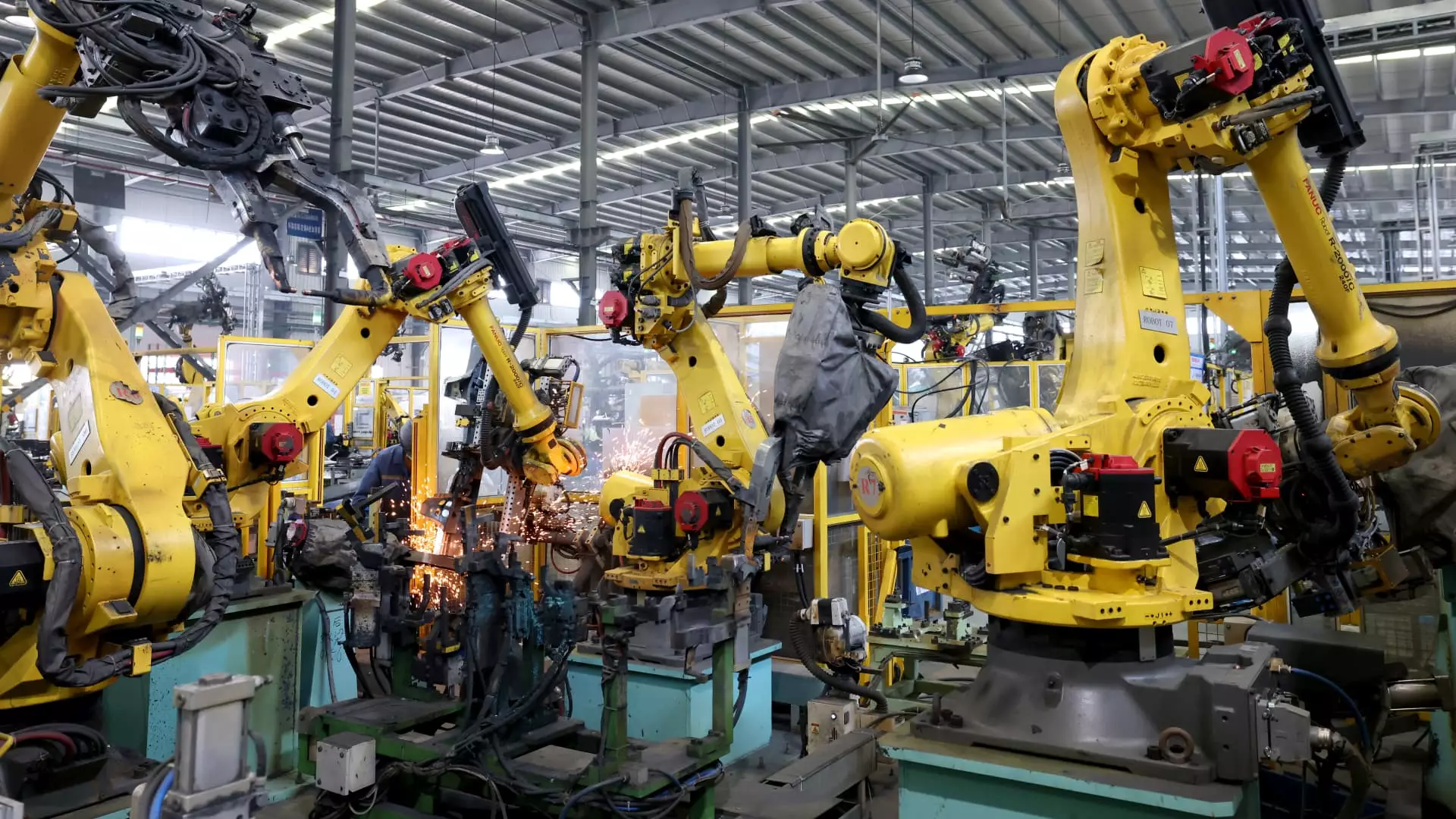In October, China’s Purchasing Managers’ Index (PMI) registered a reading of 50.1, signaling a shift from contraction to modest expansion for the first time in six months. This figure surpasses the expectations set by analysts, who predicted a reading of 49.9. The previous month’s PMI stood at 49.8, indicating a slow but noticeable improvement in industrial activity. The last time the PMI was above the crucial 50-point threshold was in April, when it recorded 50.4. This recent uptick reflects a glimmer of hope in the Chinese manufacturing sector, which has been grappling with economic uncertainties.
Analysts are cautiously optimistic about the potential for sustained economic recovery. Zhiwei Zhang, chief economist from Pinpoint Asset Management, anticipates that with forthcoming monetary and fiscal policies easing, particularly towards the end of the fourth quarter, economic momentum will see gradual improvement. The timing aligns with the impending session of China’s parliament standing committee, set to unveil new fiscal stimulus measures by November 8. This timely intervention could bolster the economy, which is currently encountering headwinds driven by a slowdown in domestic consumption and a beleaguered real estate sector.
A closer examination of the sub-indices reveals both positive and negative trends. The production sub-index recorded a solid 52, indicating a strengthening in manufacturing output, while the new orders sub-index registered a neutral 50. However, not all news is encouraging—raw materials inventory remains low at 48.2, signaling contraction, alongside employment figures at 48.4, although slightly improved from the previous month. This paints a nuanced picture: while production is expanding, challenges in raw material acquisition and employment still persist.
In the non-manufacturing sector, the PMI also indicates slight improvement, rising to 50.2 from September’s 50. This shift, however, falls short of August’s 50.3. Employment in this sector showed a marginal increase, hinting at a stabilizing trend, yet it remains below the desired threshold. These mixed signals underscore the complexity of China’s economic landscape, where growth in one area may not translate to overall stability.
Broader Economic Context: Exports and Market Reactions
China’s overall economic growth has faced pressure from diminished consumer demand and real estate market challenges, compounding concerns of a broader slowdown. Nevertheless, exports have emerged as a beacon of resilience, showing signs of recovery. Recent findings from the China Beige Book highlight an improvement in manufacturing output and new domestic and export orders. The market responded positively to recent government-led stimulus measures, with stock rallies following high-profile announcements from leadership, including insights shared by President Xi Jinping.
While China’s manufacturing landscape shows preliminary signs of recovery, it must navigate ongoing challenges in employment and inventory levels, paired with a need for robust consumer demand to ensure sustainable growth.


Leave a Reply